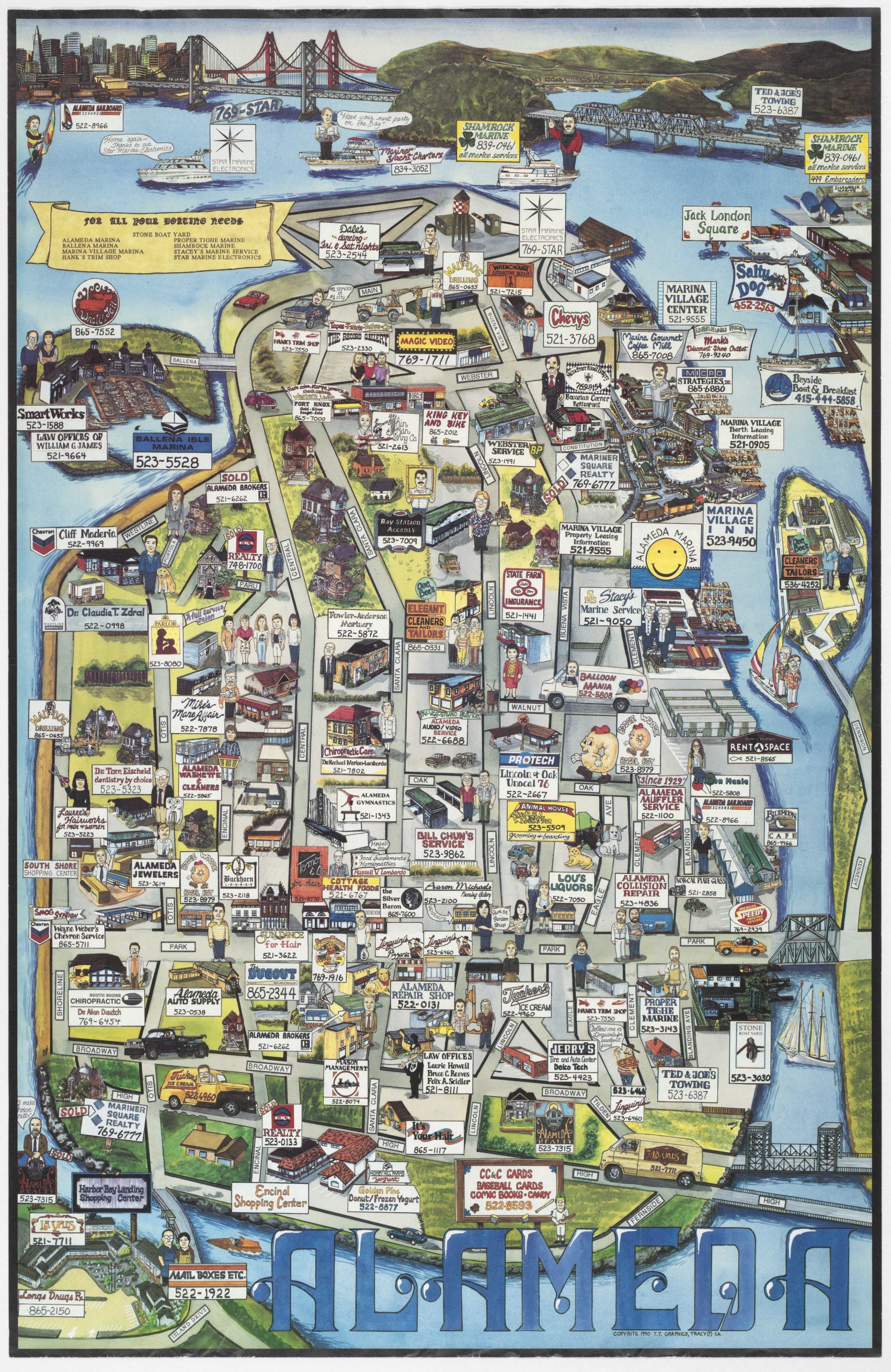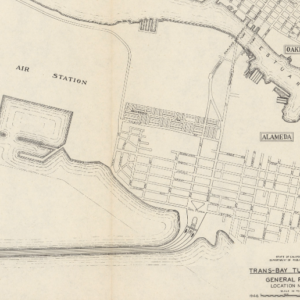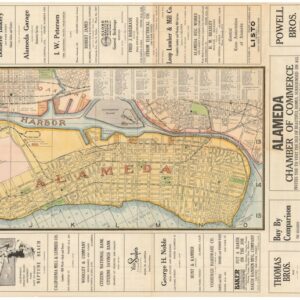A most unusual bird’s-eye-view pamphlet of Alameda County and the Greater Bay Area during a pivotal period in California’s history.
Alameda County
$975
1 in stock
Description
Neatline specializes in authentic antique maps of San Francisco and the Bay Area, and this interesting promotional map of Alameda County from the early 20th century falls comfortably within this category. This period saw a significant expansion in Northern California. San Francisco had finally overcome the devastation of the 1906 Earthquake, and the entire Bay Area was experiencing a boom in transport, construction, and production. In this milieu, various interests produced promotional materials to tout Northern California’s many qualities and encourage further emigration to the area.
Aesthetically, this map has been composed in an interesting manner. The county line that defines Alameda County is not created using a thick line but rather through a noticeable differentiation in the use of light. By increasing the light within Alameda only, the oddly angled county stands out clearly from its surroundings. In addition to highlighting the focal point of this particular map, the asymmetry of the county’s outline reveals just how important access to the Bay was when the administrative divisions of the Bay Area were originally being defined.
Along the bottom of the map, a range of texts promote Alameda County by listing some of its many attributes, including the great vineyards, its extensive agricultural produce, and sites of incredible natural beauty (e.g. Niles Canyon, Mission- and Redwood Peaks, and the High Sierras with scenic watering holes like Lake Chabot). Another set of positive characteristics are listed within the actual title cartouche at the bottom of the map, which makes clear that Alameda County had the best commercial access to the Bay and consequently to the Pacific and Continental worlds beyond.
Like the map itself, the text accentuates Oakland’s urban sprawl as an integrated part of Alameda County and the Bay’s best docking facilities, fronting the Golden Gate. Maritime access is emphasized, claiming that the Oakland Docks had sufficient capacity to harbor the combined Navies of the world. Land-based mobility infrastructure is also highlighted on the map and in the associated texts, with orange highways and black-and-white rail lines zig-zagging through Alameda and crossing into the neighboring counties of Contra Costa, Santa Clara, and Mateo County to indicate the transcontinental connectivity.
In each corner of the sheet, we find early color photographs of local landmarks that the publisher wished to highlight. Moving clockwise from the upper left corner is a view of the Oakland-Alameda Estuary, the shipyards at Oakland’s massive industrial harbor, the waterfront looking over the Bay towards the Golden Gate, and finally, the great amphitheater at Berkeley.
San Francisco and Greater Oakland stand out the most among the densely built-up spaces of the Bay Area’s towns and cities. Being the urban center of Alameda County, Oakland is the most critical cluster and is consequently presented in a notably better resolution than its San Francisco counterpart. Perhaps the most eye-catching feature of the map is Oakland’s enormous industrial harbor, with its six great docking piers stretching into the Bay like fingers trying to grab Goat Island and the traffic that passes it. South of the harbor’s facilities, we find the actual island of Alameda, which lent its name to the county.
While the areas south of Oakland were already quite heavily developed when this poster was issued in 1919 (including visible highways, train tracks, settlements, farms, and vineyards), this is nothing compared to the density of occupation today. Townships like Hayward have turned into small cities, and the countryside separating the old towns of Alvarado, Centerville, Niles, and Sunol, has all but been transformed into a continuous urban corridor stretching from Oakland to Fremont.
A final note should be made on the verso of this self-wrapped pictorial pamphlet and map. Here we find more in-depth descriptions of Alameda’s many attractions, interspersed with colored photographs of some of the county’s most scenic localities. When folded, the front and verso of the pamphlet depict similar (but not identical) views of the county, with one of the region’s iconic oak trees in the foreground.
Cartographer(s):
J.J. Rhea was an American artist, lithographer and mapmaker base din California. He is particularly famous for his early 20th century promotional material for Northern California.
Kelly-Davis Co.Condition Description
Good. Wear and some loss along fold lines and at fold intersections. Wear and minor tears along edge.
References


![[Oil Painting of Lake Merritt, Oakland]](https://neatlinemaps.com/wp-content/uploads/2024/05/NL-01966_thumbnail-300x300.jpg)

